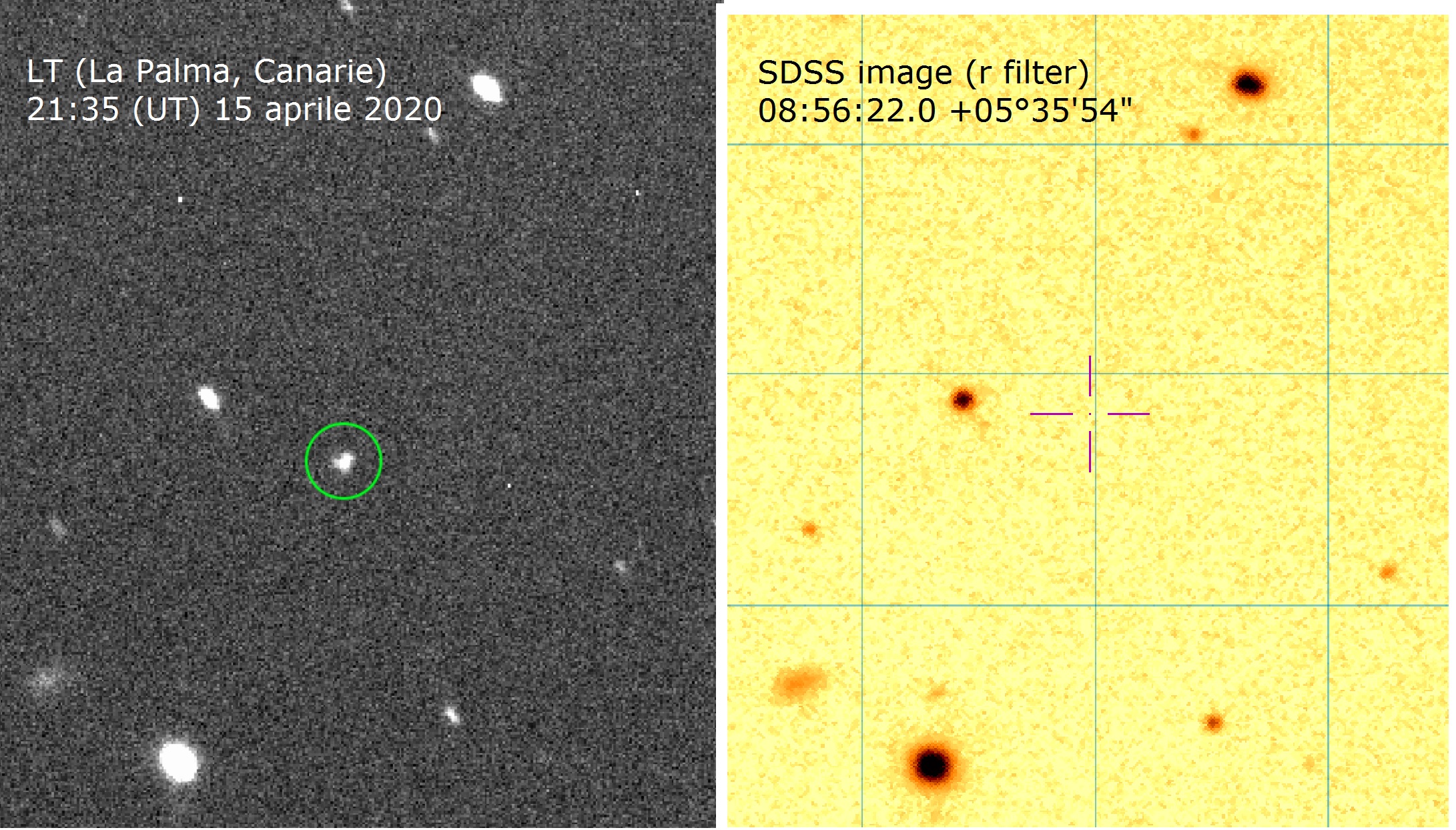One week ago, Friday 10 April, at 6:25 am Italian time, the European spacecraft BepiColombo approached the Earth, at a distance of only 12,677 km to perform a flyby maneuver with our Planet that will allow it to reach its final goal in December 2025: Mercury.

Credits: Jon Marchant of the Liverpool John Moores University, Liverpool telescope
Now BepiColombo is moving further away from Earth, becoming fainter day after day. However, thanks to Jon Marchant of the Liverpool John Moores University, on Thursday Wednesday evening April 15 we were able to get an image of the spacecraft, while it was crossing the constellation of Hydra at a distance of 2 million of km, equal to about 5 times the Earth-Moon distance”.
The photograph reproduced here (left) was taken by the Liverpool Telescope, installed on the Canary Island of La Palma. The width of this image is about 2 arcminutes; the weakest visible stars have a visual magnitude of 22, while the dot in the green circle is produced by the sunlight reflected by BepiColombo spacecraft, which is similar a star of magnitude 20. Next to it is shown the reference sky field from the Sloan Digital Sky Survey (SDSS).
INAF and the Astrophysics Research Institute are collaborating on various observational projects, coordinated by Richard Smart (INAF-OATo), including the monitoring the motion of the Gaia astrometric ESA satellite.
See the interview to Alessandro Spagna on the INAF website
